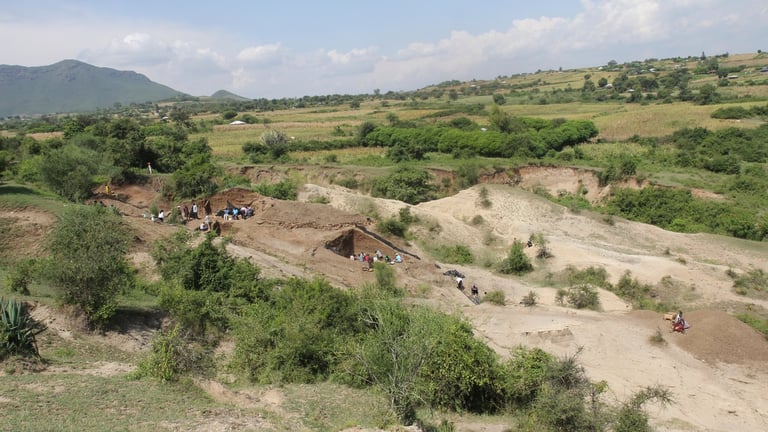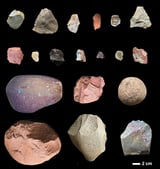New Evidence Reveals Ancient Humans Transported Stones Over 8 Miles 2.6 Million Years Ago
August 15, 2025
This behavior contrasts with chimpanzees, which typically carry stones for pounding over just over 2 kilometers, indicating a higher level of planning among early humans.
Evidence from the Nyayanga archaeological site in Kenya shows tools made from materials sourced from distant locations, demonstrating a mental map of resource distribution.
Geochemical analysis revealed that volcanic and metamorphic rocks used for tools were sourced from several miles east of the site, demonstrating advanced environmental mapping and planning.
Nyayanga's assemblage is the earliest evidence of long-distance stone transport, surpassing previous findings from Kanjera South, which was about 2 million years old.
Previously, such long-distance transport was only documented around two million years ago at Kanjera South, but now evidence from Nyayanga suggests this behavior was more widespread and complex.
The raw materials used by these hominins were diverse and sourced from multiple locations, which was unexpected given typical raw material patterns in ancient tool assemblages.
Ancient humans over 2.6 million years ago transported stones over distances of up to eight miles to craft tools, indicating advanced planning and resource management much earlier than previously believed.
The study, conducted by scientists from the Smithsonian, Cleveland Museum of Natural History, and Queens College, focused on tools from the fossil-rich Homa Peninsula.
Analysis of 401 stone artifacts matched geochemically to deposits up to 18.6 kilometers away, with the most distant sources about 13 kilometers from the site, showcasing impressive long-distance transport.
These tools were used for pounding and cutting plants and scavenged animals, such as hippos, for food, highlighting early foraging and scavenging behaviors.
Tools made from quartzite were used to create blades capable of piercing tough materials like hippo skin, indicating advanced tool functionality.
It remains uncertain which species of early humans made these tools, with evidence including a hominin molar from Paranthropus, suggesting these species may have used similar tools, though direct links are lacking.
This research challenges previous assumptions that early Oldowan toolmakers behaved like chimpanzees, highlighting their capacity for long-distance planning and resource procurement.
Summary based on 10 sources
Get a daily email with more Science stories
Sources

Yahoo News • Aug 15, 2025
Stone Age humans were picky about which rocks they used for making tools, study finds
AP News • Aug 15, 2025
Early Stone Age toolmakers were picky about which rocks they used | AP News
Popular Science • Aug 15, 2025
Stone Age humans traveled for miles to find the perfect rocks